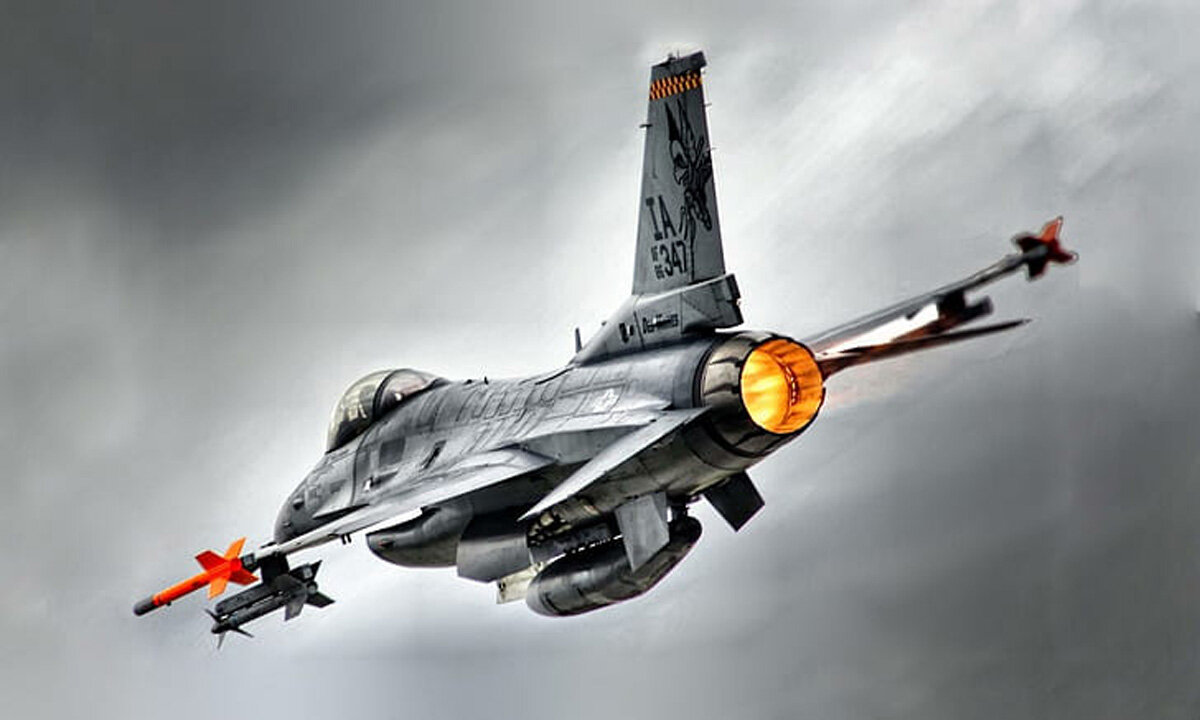Premium Only Content

F-16 FIGHTER JET "ONE MINUTE TO TEACH YOU TO DRIVE AWAY F-16 FIGHTER JET"
I can provide you with a brief overview of how to fly an F-16 fighter jet in one minute, but please note that flying a real fighter jet is an incredibly complex and demanding task that requires extensive training and experience. This is a highly simplified version for informational purposes only:
Preparation: Ensure you have proper training and authorization to fly an F-16. You must be a qualified pilot.
Preflight Check: Perform a thorough preflight check of the aircraft, including checking the systems, instruments, and fuel levels.
Startup: Start the engine by following the checklist, which typically involves turning on the battery, fuel pumps, and ignition.
Taxi: Taxi to the runway by using the aircraft's throttle, brakes, and steering controls. Follow air traffic control instructions.
Takeoff: Align the aircraft with the runway and increase the throttle to take off. Rotate the nose upward gently, and the aircraft will lift off when it reaches the required speed.
Climb: After takeoff, climb to your desired altitude. Maintain a safe climb rate and speed.
Navigation: Use onboard navigation systems and follow your flight plan to reach your destination.
Basic Maneuvers: Familiarize yourself with basic maneuvers such as rolls, turns, and climbs. Be cautious of G-forces and maintain safe speeds.
Weapons and Systems: If required, arm and configure your aircraft's weapons systems according to mission objectives.
Combat (if applicable): Engage in combat maneuvers, if the mission calls for it. Follow your training and engage enemy aircraft or targets.
Return to Base: Once your mission is complete, return to base. Follow air traffic control instructions and prepare for landing.
Landing: Align with the runway, reduce throttle, and descend gradually. Extend landing gear and flaps as needed. Gently touch down on the runway, then use brakes and reverse thrust if available to slow down.
Taxi to Parking: Taxi back to the parking area, following ground control instructions.
Shutdown: Perform a shutdown procedure, which involves turning off the engine and various systems, securing the aircraft, and completing post-flight checks.
Debrief: After landing and safely exiting the aircraft, participate in a debriefing session with your team to discuss the mission and lessons learned.
Keep in mind that this is an extremely simplified overview, and actually flying an F-16 requires years of training, a deep understanding of aviation principles, and adherence to strict safety protocols. Moreover, flying military aircraft may involve classified or sensitive information, so always ensure you are authorized and trained by the appropriate authorities.
-
 11:29
11:29
DEADBUGsays
23 hours agoThe Hitchhiker Slayer | Thor Christiansen
4695 -
 11:24
11:24
GBGunsRumble
12 hours agoGBGuns Armory Ep 132 BUL Armory Ultralight
574 -
 50:05
50:05
PMG
11 hours ago"Hannah Faulkner and Steve Stern | Election Integrity GOING FORWARD"
158 -
 41:54
41:54
Bek Lover Podcast
1 day agoHUNTER BIDEN PARDON BY DADDY & MORE NEWS!
1983 -
 3:36:52
3:36:52
Fresh and Fit
8 hours agoDisrespectful UK 304 Gets Kicked Off For THIS...
185K181 -
 2:51:59
2:51:59
HELMETFIRE
8 hours agoHIDDEN BOSSES!? WE AINT DONE YET! The Last Faith
56.8K5 -
 3:08:56
3:08:56
PandaSub2000
3 days agoStar Wars: Outlaws | ULTRA BEST AT GAMES (Original Live Version)
46K7 -
 4:29:06
4:29:06
MissesMaam
11 hours agoISSA RUMBLE TAKEOVER BABY 💚✨
33.2K7 -
 1:51:52
1:51:52
Kim Iversen
13 hours agoUS-Backed Al-Qaeda Takes Over Syria: Israel the Biggest Beneficiary — Were They Responsible?
115K158 -
 1:54:02
1:54:02
Fresh and Fit
12 hours agoMoney Monday Call-In Show
141K17